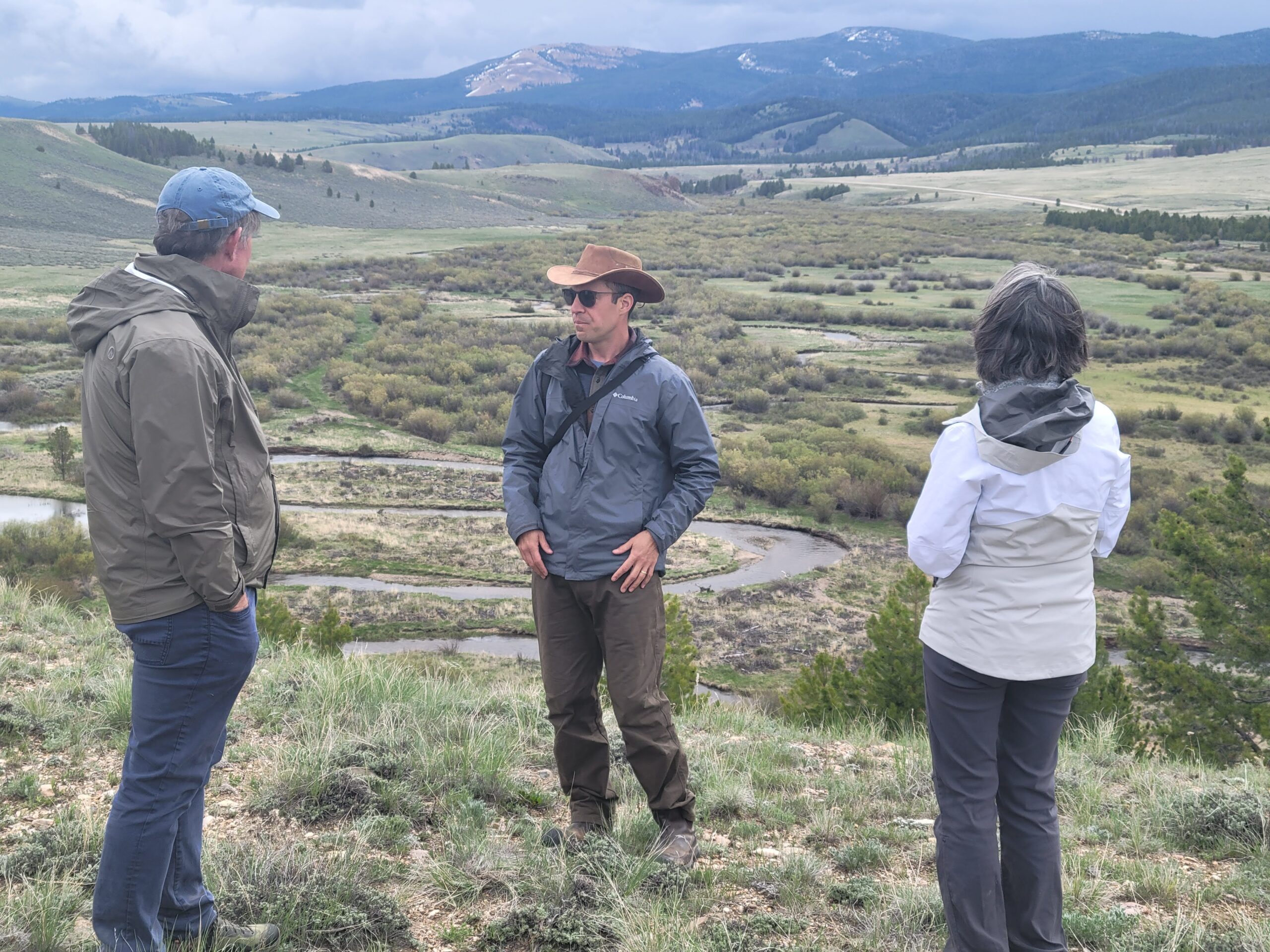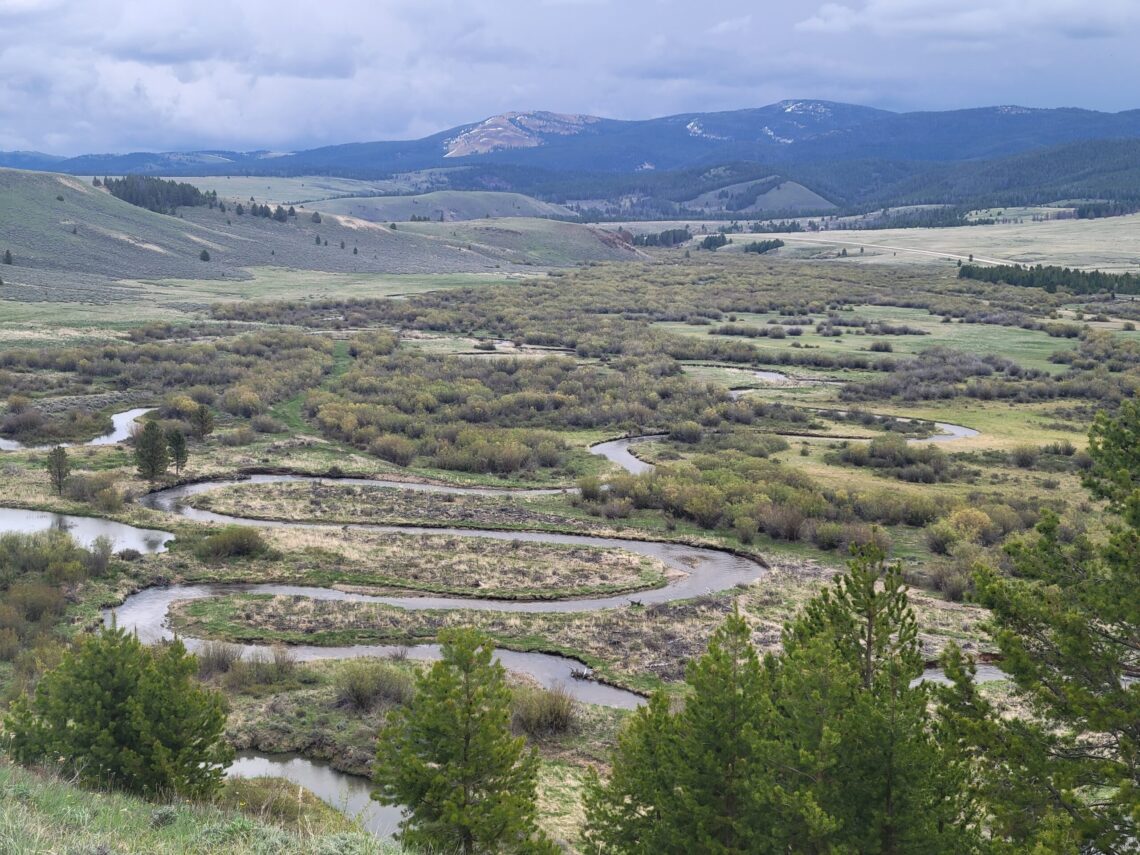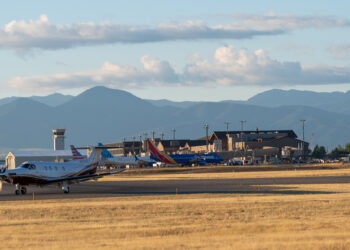Big Hole Watershed Committee encourages shared sacrifice
By Benjamin Alva Polley EBS CONTRIBUTOR
Southwest Montana’s Big Hole River has garnered much attention in the media lately due to its algae blooms, drought, dying fishery, warm water, and low river flows. Behind the headlines and photos of zombie fish, however, are impactful restoration projects and stakeholder meetings by the Big Hole Watershed Committee. Every third Wednesday, they meet at the Grange Hall in Divide to hear from experts and discuss problems and solutions for water management.
For the last thirty years, the BHWC has been committed to addressing the problems along the Big Hole watershed, working to keep conversations going, secure grants, conduct groundwork, collaborate and coordinate with stakeholders, and restore and improve the watershed stream-by-stream, one drop at a time.

BHWC plays the long game. They know conservation takes time and involves building trust by maintaining long-standing relationships. BHWC secures project funding through grants and fundraising campaigns. They also coordinate with multiple agencies, including the U.S. Forest Service, the U.S. Fish, Wildlife Service, the Bureau of Reclamation, the Bureau of Land Management, the Montana Department of Natural Resources and Conservation, the Montana Department of Environmental Quality, and Montana Fish, Wildlife and Parks, as well as private landowners and other local conservation organizations. Some agencies are underfunded and understaffed, but that is where the BHWC steps up to fill in the gaps and make conservation happen quickly.
Easy to play the blame game
Playing the blame game is easy when a watershed isn’t doing well. For example, some ranchers blame anglers for overfishing, and some anglers blame ranchers for low river flows.
“Anyone who floats the Big Hole River in August sees the irrigation ditches full of water, the river low, and irrigators taking water as pivots spray fields,” said Pedro Marques, the executive director of the BHWC. “It’s easy to blame and point fingers, and ranchers become easy targets.”
The Big Hole River Drought Management Plan encourages voluntary conservation in the name of shared sacrifice. Some irrigators give up water they are legally allowed to use (and often need) to keep water in the river for the fishery and the local angling economy. They understand that the watershed’s long-term health is more important than short-term monetary gains.
Some ranchers are enrolled in the Candidate Conservation Agreement with Assurances program in the upper Big Hole. They have site-specific agreements that require them to reduce their water use during periods of drought in exchange for legal protections should Arctic grayling become listed under the Endangered Species Act. BHWC and the CCAA initiate a phone tree and call key irrigators, who help spread the message.
“The Big Hole Watershed Committee has been a forum of education and a place to exchange ideas of how to improve the habitat for the betterment of the resource,” said local rancher and BHWC board member Randy Smith. “I have always thought it’s all about the resource, not the politics.”

History
The BHWC hatched in 1995, and the catalyst was when the river ran dry near Wisdom in 1988. At the time, ranchers were in the river with excavators diverting water into their irrigation ditches. The 1980s and ’90s were a strenuous time in the Big Hole; tensions rose as drought worsened and Arctic grayling populations declined.
In 1994, the U.S. Fish and Wildlife Service suggested placing grayling on the Endangered Species List because the Upper Big Hole River was a potential refuge for replenishing fish numbers. Ranchers feared the big government would come and tell them what to do with the resources, so they collaborated to find local solutions.
A historic moment happened in August 1994 after six ranchers toured the watershed with the Legislative Water Policy Committee. They sat down together and wrote a letter to then-Gov. Marc Racicot seeking economic assistance and direction on how to deal with the river’s problems. Together, they wanted to create positive change.
In January 1995, all ranchers holding water rights along the river were invited to a meeting, where they appointed two ranchers from each of the four river stretches. They knew the key to success was inviting other stakeholders into the conversation, including businesses, conservation groups and districts, guides and outfitters, local governments, and water utility groups.
Not long after the group was formed, the MDNRC was directed to do a detailed report of rivers statewide, including the Big Hole, that were candidates for a “Chronically Dewatered” listing. This would have caused state and federal government regulatory agencies to get involved and place measures on ranchers. The BHWC persuaded DNRC to allow the committee to resolve the issues locally. The group scheduled meetings to have experts educate themselves about water management, history and options, and formulate a plan to save the watershed. The group enacted the state’s first Drought Management Plan based on voluntary participation to meet target river flows, which is still used today.
“The Big Hole Watershed Committee is a community-based group of individuals representing all interests dedicated to our responsibility to nature and society to ecologically and economically enhance our working landscape,” said rancher Jim Hagenbarth, a chairman of the BHWC.
Doing the work
The BHWC became a nonprofit organization in 2005. It comprises six people—three full-time, three part-time, plus 22 board members—and does half a million to three-quarters of a million dollars worth of work annually.
Since 2016, the committee has restored riparian plants near Melrose, stabilized streambanks by enhancing plants in the Lower Big Hole, created fish passages by the Upper French Gulch, helped restore streambanks in the Upper Big Hole, found ways to hold back snowpack, restored Oregon Creek Placer Mine, French Gulch, Moose Creek and Lower French Creek, and continue pilot projects along Mount Haggin Uplands.
Restoring riparian plants and streambanks helps to provide shade along the river’s banks, which in turn helps to cool the water temperature. They also build beaver dam analogs, human-constructed dams that slowly release water over time and help saturate the water table by spreading water out. BHWC plugs up gullies from sedimentation, rebuilds, and restores wetlands.
“Agencies are piling money into our partnership agreements, which are long-term contracts that get access to more funding yearly,” Marques said. “We get companies hired and jobs done at lightning speed compared to what the agencies can do because the internal processes need multiple approvals and signatures for everything, which takes forever.”
BHWC has one Superfund site signed off by the EPA and a multi-million dollar remedy in the works for the Elkhorn Mine, which still has flowing orange water contaminated with heavy metals.
The DNRC is still satisfied with BHWC’s progress by not issuing the Chronically Dewatered status. The USFWS has determined that the Arctic grayling does not warrant listing under the ESA, partly because of the BHWC’s successful conservation efforts. The organization has been upheld as a watershed and drought management model statewide.
Conifer encroachment
BHWC coordinates projects to address historic droughts by writing grants and hiring project work, such as the thousand acres of conifer encroachment they manage between the BLM and the USFS. Seventy percent of the Big Hole comprises pine trees, and 70% of the precipitation hitting the Big Hole is used by vegetation. Conifer forests are slowly encroaching and gobbling up grazing lands, economically impacting ranchers and anglers.
“The forest has more than doubled in the last hundred years [in the Big Hole], and fire crews have stopped every fire from thinning the forest, so we have more straws drinking that groundwater before irrigation even starts,” Marques said. “Every pine tree begins photosynthesizing as soon as its temperature reaches the mid-30s. They start drawing up groundwater.”
The watershed is at a deficit before irrigation even starts.
“They are thinking of many different ways to keep more water in the river,” said Butte-Silver Bow Water District Supervisor, Jim Keenan, over the phone. “It’s a vital organization that does excellent work—some restoration projects and all the coordination of agencies, ranchers, outfitters and everyone else.”
If you follow the logic and think ranchers are at fault for the river’s demise and your goal is to get ranchers off the river and the landscape, then think of the outcome. Only one land use replaces ranches: subdivisions.
“Do we want to eliminate ranches’ open space, create subdivisions and strip malls in the Big Hole, and become the next Jackson Hole, Wyoming?” Marques asked.
Some ranching families have been on the landscape for hundreds of years. They care about the resources, the watershed, and the wildlife because their livelihoods depend on them. They have spent a century or more learning from the land and trying to prevent the subsequent tragedy of the commons.
Conservationists come in all shapes and sizes, and while some conservation groups don’t mind working in the background, they still deserve recognition.
Learn more about the Big Hole Watershed Committee at bhwc.org.













